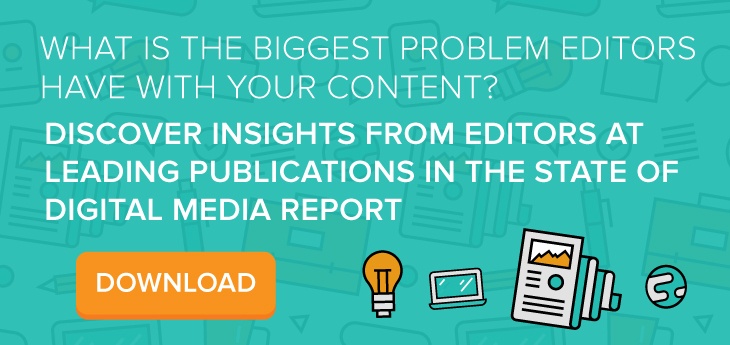 Content marketing’s rapid growth in recent years has brought with it an influx of guest-contributed content to leading industry publications — and editors are feeling the pressure.
Content marketing’s rapid growth in recent years has brought with it an influx of guest-contributed content to leading industry publications — and editors are feeling the pressure.
As leaders read online publications to learn more about industry trends and best practices for their companies, they know that the authors of those articles are knowledgeable. After all, that content has been published in reputable magazines and trustworthy publications that keep readers up-to-date.
The recognition and visibility that publishing on an industry publication can bring to a company is valuable, and leaders know they have expertise to share that would surely be relevant to others in their industry. After brainstorming strategies and crafting content, they’re tasked with making sure this content gets in front of the right audience at the right time — and that’s no simple mission.
The frustration most often stems from not knowing which publications to target, which editors to contact, what to say, or how to present yourself as someone a publication wants to work with, and that’s understandable. Unless one regularly works with publication editors, it’s hard to know the best ways to pitch them.
What Editors Want
Editors’ primary concern is serving their readership, and they do this by consistently providing timely, quality content that’s relevant to their readers’ knowledge level and specific interests.
The problem is that editors are currently receiving content that doesn’t sufficiently serve their readership. Rather than receive content that readers would find valuable, engaging, and educational, these editors receive content from company leaders looking only to promote their businesses, products, and services. In fact, the most common problem editors reported seeing in the content they receive is work that’s overly promotional.
How to Pitch What Editors Want
Now that you have a better understanding of what editors want to see from contributors, take the following steps to pitch and create content editors will love:
1. Do your research.
Before you begin writing your content, research your target publication. Get familiar with the publication’s audience, what kind of content is most commonly published, and which topics perform best on the site, and align your content with what you’ve learned. Start by reading through the publication’s content and looking at its “About” page for a media kit to get a more in-depth look.
2. Understand writing and submission guidelines.
In your publication research, look for writing and content submission guidelines. Many times, editors will publish style guides and editorial directories to help you create content they can use, directing you to the appropriate editor. Being aware of styles and having an idea of who you’re pitching before you jump into content creation can save you a lot of time.
3. Select an editor.
Publications will often segment editors into sections, and those editors are responsible for collecting, editing, and publishing content within that section. Find the editor who oversees the section you want to publish on, and pitch your idea to her. If you can’t find the editor responsible for your desired section, look for a managing or contributor editor instead.
4. Pitch your idea.
Before you spend hours writing your content, pitch your idea to the editor to make sure it’s something she’s looking for. Make her job as easy as possible by including all the information she needs to determine whether the article topic fits the publication.
Keep your pitch email to the editor short, sweet, and to the point. In your email, you must:
- Respect the editor’s time by acknowledging her busy schedule.
- Thoroughly and concisely explain the topic and why it fits the publication.
- Remain polite, refraining from coming across as too pushy or demanding.
- Proofread to ensure the names of the publication, section, and editor are all spelled correctly.
5. Write your content.
Remember that your content should be advancing the conversation within your industry and must provide value to the publication’s readers. Give your article a different angle, write in a unique tone, or present controversial ideas that challenge readers. Above all, avoid being promotional — it hurts your brand, and it turns off the publication’s followers.
6. Edit and submit your article.
Remember the writing and publication guidelines you researched before you created your content? Use these to give your article a thorough edit. After you’ve made your writing the best it can be, run it through a plagiarism-checking software, like Copyscape, to make sure it doesn’t contain material that isn’t unique or your own. Then, send it to the publication’s editor.
Successfully pitching articles to your favorite publications’ editors is a challenging job. At Influence & Co., we have a team of publication strategists dedicated solely to researching and vetting publications in your industry to reach your target audience by working directly with editors, building solid relationships, and carefully pitching appropriate articles to fit the publications.
It’s never a simple task, but following these steps will get you on your way to successfully working with the editors at your favorite online publications.
For more insight into what editors are looking for, download your copy of "The State of Digital Media" below:




 Content marketing’s rapid growth in recent years has brought with it an influx of
Content marketing’s rapid growth in recent years has brought with it an influx of 



